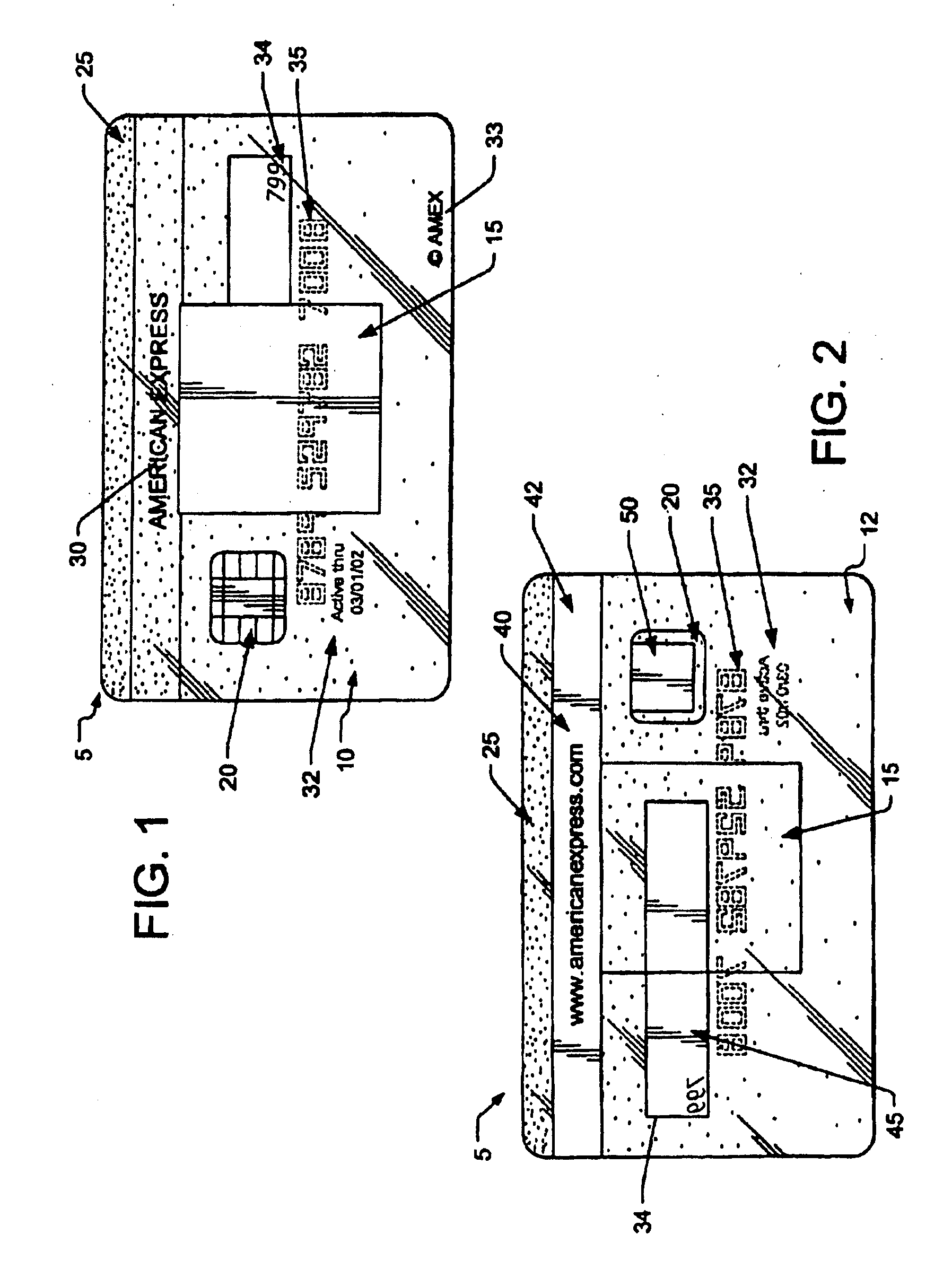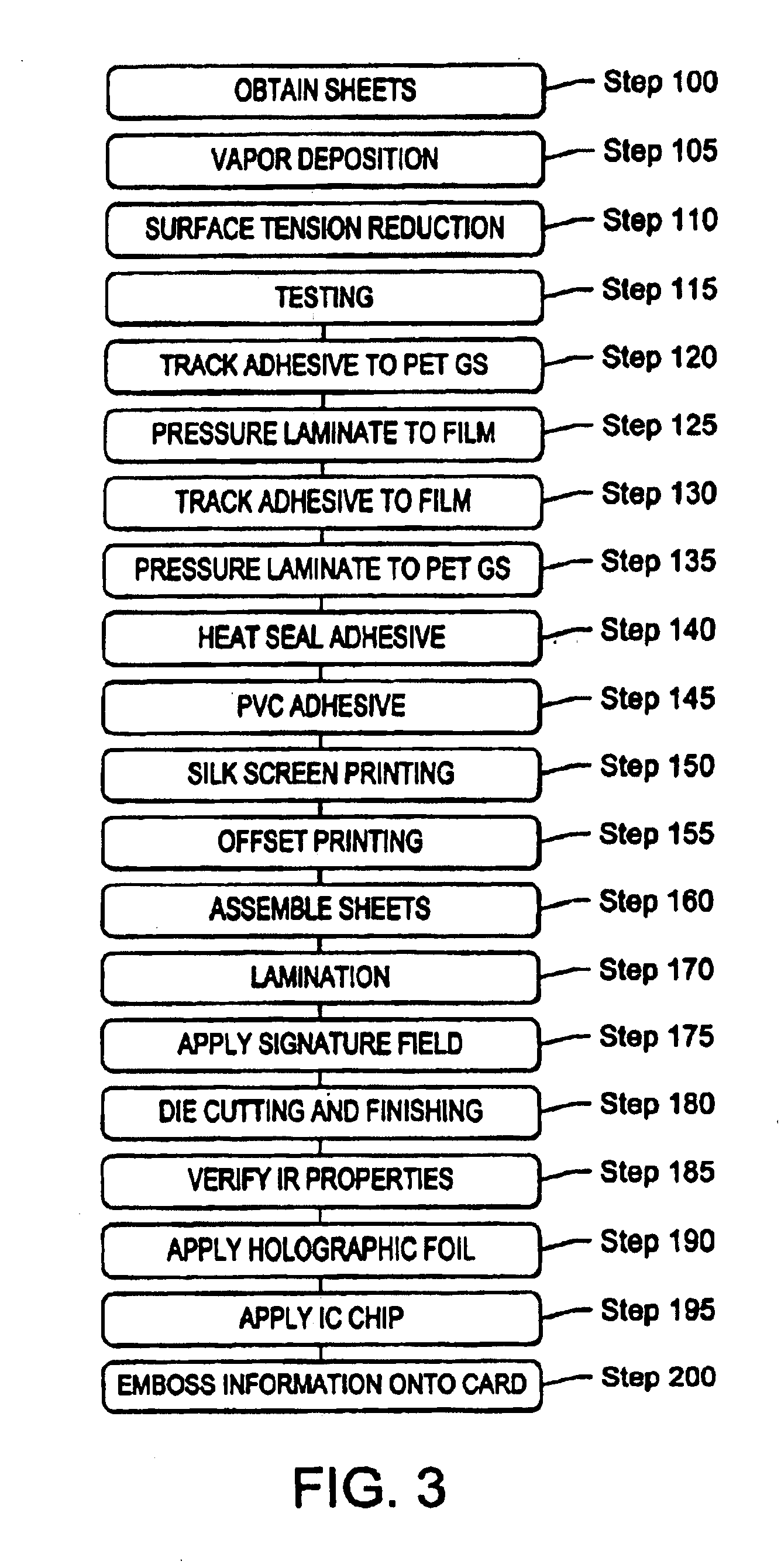Transaction card
a technology of transaction cards and cards, applied in the field of transaction cards, can solve the problems of increasing administrative and security problems, such as fraud, merchant settlement, merchant settlement, etc., and increasing the number of transactions
- Summary
- Abstract
- Description
- Claims
- Application Information
AI Technical Summary
Problems solved by technology
Method used
Image
Examples
example 1
[0068]The present example includes about 2% Epolin VII-164 dye and about 98% Tech Mark Mixing Clear, produced by Sericol, Inc. 980.0 g of Tech Mark solvent evaporative screen ink is mixed on a high-speed disperser. While mixing, 20.0 g of Epolight VII-164 dye is dissolved completely. The resulting ink has a viscosity of about 3.2 Pa·S at 25 C. degrees and is printed using a screen process. The screen process includes a 305 polymer screen onto both sides of clear PVC 13.0 mil film.
example 2
[0069]The following ink was produced by adding about 15.0 lbs of Epolight VII-164 and about 20.0 lbs of Epolight VI-30 to about 965 lbs. of TM Mixing Clear. The mixture was dispersed for about 40 minutes. The resulting mixture was coated on PVC core plastic using an 80 line / cm polyester screen. The resulting coating exhibited high absorptivity from 780 nm to 1070 nm with low visible absorption. Card core, magnetic stripe and laminate were assembled and the entire assembly was placed in Burckle Stack Lamination Unit at a temperature of about 280° F.
example 3
[0070]A concentrate of about 30.0 g. Epolight VII-172 was blended with about 700.0 g. of polyvinylchloride plastic. The resulting mixture was extruded at about 260° F., air cooled and pelletized. About 1.0 lb of the resulting pellets were combined with about 99.0 lbs of PVC. Klockner Pentaplast provided calendered sheets of approximately 0.013 inches. Cards were fabricated using said sheets. These cards exhibited sufficient absorption in the IR region from 800 nm to 1000 nm. The cards were detected by a Sankyo ATM capture device.
PUM
| Property | Measurement | Unit |
|---|---|---|
| wavelength | aaaaa | aaaaa |
| wavelength | aaaaa | aaaaa |
| voltage | aaaaa | aaaaa |
Abstract
Description
Claims
Application Information
 Login to View More
Login to View More - R&D
- Intellectual Property
- Life Sciences
- Materials
- Tech Scout
- Unparalleled Data Quality
- Higher Quality Content
- 60% Fewer Hallucinations
Browse by: Latest US Patents, China's latest patents, Technical Efficacy Thesaurus, Application Domain, Technology Topic, Popular Technical Reports.
© 2025 PatSnap. All rights reserved.Legal|Privacy policy|Modern Slavery Act Transparency Statement|Sitemap|About US| Contact US: help@patsnap.com



